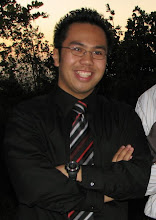 AT PMH, ALL YOU
AT PMH, ALL YOUNEED TO KNOW
IS THE
RAINBOW.
My very good friend Neal, from Champaign, IL asks:
"I'd love to hear about the medical gadgets and technology you're using [in Dominica]. Which do you think are cool? Are there old fashioned devices/new ones?"
On Friday of this week, President Obama named a Harvard professor (Dr. David Blumenthal) to take over the modernization of information technology (IT) record keeping (from the days of paper-domination) in the United States (with a price of about $20 billion dollars). For everyone, I'm sure you've seen those tabular sheets that your doctor probably carries around in a light manila folder whenever you're in the office. When you're talking to him or her, it won't seem like he's trying to actually fill it in properly: He's not circling all the items, using handwriting that's not much better than the output of a seismograph during an earthquake, and not following his mother's advice by writing outside of the lines. That's the issue with record keeping: it's hard to keep it uniform so that when another doctor that gets a hold of the records, he or she can understand your situation.
Well, Neal, you probably are still wondering if I'm ever am going to answer your question, but I mentioned the above to create a dramatic contrast of the level of technology simply based on organizing critical patient information.
Like I said above, it's all about the rainbow. At PMH, record keeping is definitely old-fashioned. When handed a patient's records, I don't get a manila folder here. I end up with a pink (or sometimes blue, or sometimes tan-ish) colored folder that's seemingly constructed out of (go figure) construction paper. Holding together the massive amounts of colored paper that are inside are pieces of green yarn. Inside, the paper forms are definitely consolidated to a small set: Green is usually for doctor's notes, Yellow is for blood tests, Manila is for admission information, and Red (I think) seems to be more admission information. The best part is that there's no standardized chart on the Doctor's / Nurse's Notes. So, aggravated by the seismograph-like handwriting, it makes it more tough figuring out abbreviations or organization of critical information when trying to report back on the patient. As you can tell, Neal, to me, record keeping is one of my biggest concerns with technology for the Dominican Hospital (and to me, probably the easiest to set up: get together and IT department and wire up the hospital).
With that out of the way (and knowing you're an engineer), I think one of the best pieces of technology actually is something I carry everyday. You've probably noted your doctor ask you for permission to look into your eyes during a general check up and he'll flash a light into your eye and look through an instrument right into your eyes. This baby is called an ophthalmoscope. Looking into your eye and visualizing the rear wall of your inner eye (the retina) can be very diagnostic of signs of conditions that plague many of us (i.e. Diabetes or Hypertension). However, the ophthalmoscope I carry around (the WelchAllyn PanOptic, with a more detailed link below), is about 3 times as large as a standard ophthalmoscope you see in a typical Doctor's office. Using refractory technology, it actually gives a Doctor 5 times the viewing field of the rear of your retina than the standard opthalmoscope, allowing someone like myself to catch abnormal changes in your retina more easily.
Otherwise, PMH isn't really fully featured with technology, to be honest to ya. You'll find good, up-to date standards in the operating room (i.e. finger-placed optical detectors for vital signs such as blood pressure and oxygen saturation), also there's standard tech such as X-Rays and (I think a CT machine), but its hard to find even computers to organize patient data or records of who has been admitted in some of the wards. Another stark contrast occurs when noticing that there's no TVs to keep patients occupied as they lay in the wards.
It sounds like technology acts as a detractor to the whole experience, but I totally believe that technology can only be as good as the doctor that uses it him/herself, and the hands-on experience with patients (the people who truly matter) is something I can take with me in the future. Trust me, when I say that the doctors at PMH are absolutely amazing as clinicians and also as teachers, because it's amazing what they can do even without the big-bucks technology we find in U.S. hospitals today. With T-19 days left until I return home, I'll say it before I forget: Thanks for Everything, Princess Margaret.
Hope this answers your question. I'm looking forward to another good prompt (it keeps me occupied). :D
Sources: RedOrbit, WelchAllyn


Jay,
ReplyDeleteThat is really interesting. Dominica is the perfect place to learn. Not having some technology and having to check these things yourself (without a computer) makes you way more engaged. It's easy to take technology for granted, and not learn as much.
From my point of view, sure I can built a computer out of parts from the store, or I Could design the whole thing from scratch, have it manufactured and assembled. The second process, you just learn more.. :).
Love the blog Jay
You're going home in 19 days? Like home-home?
ReplyDelete